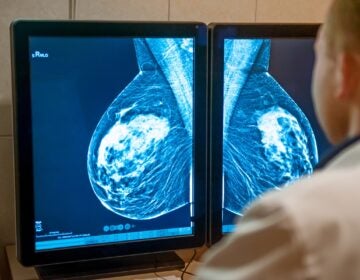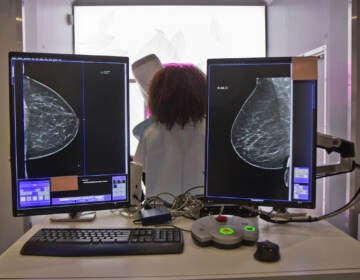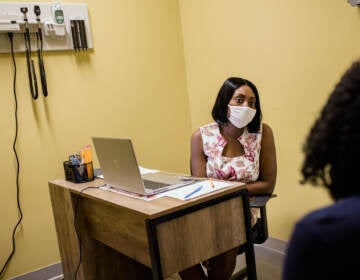After a double mastectomy: How breast cancer can reshape gender identity
Two people recount the after effects of breast cancer surgery.
Listen 8:36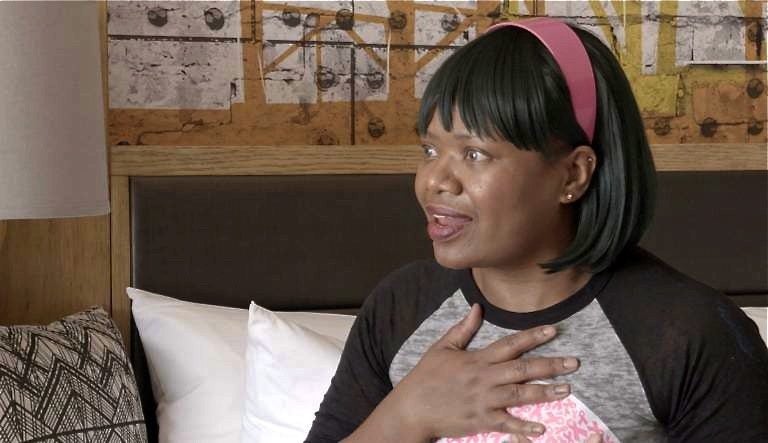
Shay Sharpe reflects on cancer treatment and femininity. (Image courtesy of Emily MacKenzie)
Over two years ago, I set out to interview as many breast cancer patients as possible and record their stories. I was most interested in understanding how having breast cancer affected identity.
What does having a disease of a uniquely “female” and highly visible body part reveal about our ideas of gender and femininity? Do our gender identities live in our body’s component pieces?
I soon met Vonn Jensen, U.S.-based cancer activist. Jensen is trans and non-binary and uses the gender-neutral “they/them” pronouns. They founded the organization Flattopper Pride and the support group Queer Cancer.
Jensen and I partnered on an audio documentary series called Tapestries, which I am currently editing. The series questions our culture’s relationship with cancer, femininity, gendered bodies, power and survival.
We found that many voices and stories don’t fit so neatly into the pink box that breast cancer stories often come packaged in. In this excerpt, I share two stories that are very different but, at the same time, have a lot in common. Both subjects have had double mastectomies and have gone through a process of struggling to understand and be at home in their bodies.
Still 100 percent woman
I met Shay Sharpe at a young breast cancer conference. She has bright, expressive eyes and a bob hairstyle.
Shay was 26 when she learned she had to get a double mastectomy. As a self-proclaimed “girly-girl” the prospect of removing her breasts was daunting.
“As a woman, you’re supposed to have breasts. I’m supposed to have those,” she recalled thinking at the time.
After her double mastectomy, she didn’t think twice about doing immediate reconstruction. It was a common surgery, and it seemed like there was little risk.
But within a year, one of her implants rejected and had to be quickly replaced.
A year later, it happened again.
Shay decided to take out both implants and consider her options.
She worried, “Is somebody still going to see me as normal with all of this cancer baggage? I needed to feel as womanly as possible. I still wanted to be desirable, you know.”
After two rejections, Shay still wanted breasts, but her body couldn’t take the silicone implants. So her doctors offered an alternative: a surgery in which they created breasts using tissue and fat from her abdomen. The surgery was complicated, and the recovery would be brutal. She would be out of commission for weeks.
Still, it was important to Shay to have breasts, and she thought that creating them from her own tissue would be better than the implants.
So, she went ahead with the surgery. It was a success — for a time.
Shay’s cancer eventually came back a few years later, which left her facing a possible fourth reconstruction.
She says, at that point, everything began to shift in her mind.
“How much more scarring can my body take? How much more skin do I even have for reconstruction? It got to a point where, ‘I’m tired. I don’t want any more surgeries.’”
Shay decided against another reconstruction, but her boyfriend at the time wasn’t comfortable with the idea of her not having breasts. And she says that when she was honest with herself, she understood where he was coming from.
One night Shay was lying awake, turning the decision over in her mind when she realized that her boyfriend was putting the same pressure on her that she had been putting on herself for years. For him, looking “like a woman,” was more important than avoiding additional surgeries. She had spent years going under the knife in an effort to reconstruct a body that cancer had indelibly changed. Shay asked herself, “did he just do to me what I was doing to myself all these years?”
That was really the turning point for Shay. Once she realized that she’d been trying for years to return to a body and identity that was gone, she accepted herself. After 10 years, three reconstructive surgeries, and two occurrences with breast cancer, she finally felt at home in her own skin.
“Once I became okay with Shay, it didn’t matter whether I had boobs or no boobs. I’m fine with it. I like it. I don’t need a bra, and it feels nice! Even with no breasts, even with no lashes, brows, hair, no ovaries, I’m still 100 percent woman. This is me. This is it. Take it or leave it.”
Hell of a way to transition
Eli was 33 when they were diagnosed with breast cancer. Eli is trans and non-binary, and uses they/them pronouns.
Shortly before diagnosis, Eli began going to a support group for people outside the gender binary.
Eli’s relationship with their chest had always been a struggle, and it was in the support group where they began to actually embrace the truth that they didn’t feel comfortable with breasts.
Eli discovered the cancer one evening while considering surgery that might remove their breasts.
“I’m kind of in the mirror, really just trying to get my breasts out of the way so I can imagine what I’m going to look like with a flat chest. And that’s how I found this lump that was really wedged in there under my armpit,” said Eli.
Eli underwent a double mastectomy as part of treatment and opted not to have any sort of reconstruction.
“For me, I felt like, this is a hell of a way to transition. Top surgery is different than a double mastectomy. Double mastectomy, they just take out the breast tissue. Top surgery, they give you a ‘male-appearing chest.’ I’m not super interested in being male appearing or having a male-appearing chest. I just wanted a flat chest,” Eli said. “I just didn’t want breasts.”
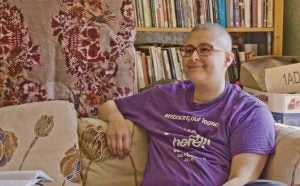
Eli underwent a double mastectomy and chemotherapy.
To that end, having a double mastectomy created a surgical outcome in line with Eli’s gender.
“I feel lucky because I had doctors who advocated for me and who listened to me. They weren’t always amazing about being trans-savvy, but ultimately what I got was a really gender-affirming surgery.”
Currently they have no evidence of disease.
Emily MacKenzie and Vonn Jensen are in the process of completing their audio documentary series which will incorporate the voices and stories of more than a dozen breast cancer survivors. You can check on the status of their project or share your story with them at Tapestries.
WHYY is your source for fact-based, in-depth journalism and information. As a nonprofit organization, we rely on financial support from readers like you. Please give today.




